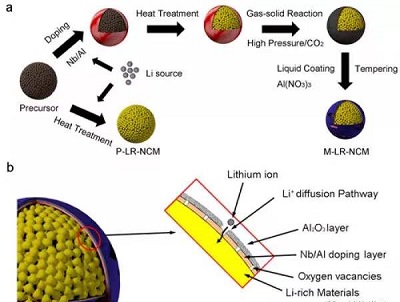Electric vehicles have a stable cruising range, academy of Sciences has developed a new type of battery: energy density up to 345Wh/kg
Cruising range
At present, the range of electric vehicles on the market is generally about 500 kilometers, and if it is in the cold winter, the performance of lithium batteries will drop by 100-200 kilometers.
Short cruising range has become a major factor restricting consumers from buying electric vehicles. If the cruising range is increased to 1,000 kilometers, then more consumers will inevitably choose electric vehicles.

Lithium-rich manganese-based cathode material
According to the Institute of Materials Technology and Engineering, among the currently known cathode materials, the specific discharge capacity of lithium-rich manganese-based cathode materials is as high as 300mAh/g, which is about twice as much than the current commercial application of cathode materials such as lithium iron phosphate and ternary materials.
Ideal choice
Lithium-rich manganese-based cathode is the ideal choice
In other words, the lithium-rich manganese-based cathode material is considered to be the ideal choice for a new generation of high-energy density power lithium batteries, and it is the key to the technology for the energy density of power lithium batteries to exceed 400Wh/kg.
The research team of the Power Lithium Battery Engineering Laboratory of the Institute of Materials Technology and Engineering has long been committed to the research and development of lithium-rich manganese-based cathode materials. Recently, the team has made a series of progress.
The team used surface modification methods such as surface doping, gas-solid interface modification, and surface coating to achieve the construction of a composite surface structure and prepare a lithium-rich manganese-based cathode material with high specific capacity and long cycle stability.
The research team used the lithium-rich manganese-based cathode material and graphene composite silicon-carbon anode material to design and develop a new battery with an energy density of 345Wh/kg (capacity 20Ah), and the battery exhibits excellent cycle stability.
However, it needs to be pointed out that the battery is still some distance away from mass production, but it just points out one of the development directions of power batteries in the future, so it is not far from the era when the range of electric vehicles can easily exceed 1,000.





